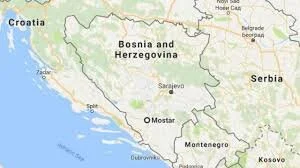Combating turtle poachers has often seemed like a hopeless task where innocent hatchlings always tend to lose. However, scientists in Costa Rica are beating poachers through the implantation of decoy eggs.
Olive ridley turtle hatchling. Roehan Rengadurai. CC BY-NC-ND 2.0.
When one thinks of a turtle’s life, it is often the image of an aged green sea turtle gliding gracefully over magnificently colorful coral reefs. Conversely, it could also be an injured turtle succumbing to increasing plastic pollution as it struggles to escape the rings of a beer can. What is often overlooked are the turtles that never even break into the daylight; millions of turtle eggs are stolen by malicious poachers who sell them to under-the-table buyers.
Costa Rica stands as a prime example of a place where turtle egg poachers are abundantly transporting stolen eggs to urban areas.
Turtle eggs are somewhat of a delicacy in Costa Rica, where they are served in a variety of ways. For instance, they are mixed with beer, served raw, or hard-boiled. Prices of the eggs vary widely, with some costing $5 apiece while others can set one back around $20.
Poachers stealthily scavenge beaches known to house turtle egg nests, which primarily belong to the threatened olive ridley and endangered green sea turtle species. Scientists now realize that effectively tracking poaching activity may require an innovative but rather odd approach.
The decoy eggs, called InvestEGGators, are formed using a 3D printer and are made out of silicone. They are around the size of a pingpong ball and look nearly identical to real turtle eggs. The white balls are also slightly painted with a textured paint to mimic the varied hues of an egg. Inside, there is a small black block that houses a GPS transmitter. The tracker feeds information about the location of the egg once every hour. The hope is that poachers mistakenly pick up the decoy egg along with real ones, since poachers tend to take whole nests at once.
Scientists have invested in this method because it has more beneficial long-term effects on combating the poaching problem. Instead of catching poachers in the act, researchers say that it is much more effective to track the distance and location that the eggs travel to be sold. From an enforcement point of view, tracking the location of sites where the eggs are sold to buyers allows for more frequent and lasting crackdowns.
In one test, researchers hid 101 decoys in turtle nests, and about 25% of them were transported by poachers. It was discovered that the distance the eggs traveled varied quite a bit; some traveled just over a mile to someone’s home, while others went well over 80 miles to houses in Costa Rica’s Central Valley.
Scientists were previously concerned that planting decoy eggs could possibly harm the other eggs’ ability to hatch, but the other eggs appeared to hatch successfully.
The study has now branched into a larger scope of conservation, with talks that this method can be beneficial in saving other endangered animals.
As stealthy as poachers may get, sometimes one has to beat them at their own game to have a chance at winning. Luckily, a handful of clever scientists have successfully played the poachers.
Ella Nguyen
Ella is an undergraduate student at Vassar College pursuing a degree in Hispanic Studies. She wants to assist in the field of immigration law and hopes to utilize Spanish in her future projects. In her free time she enjoys cooking, writing poetry, and learning about cosmetics.






























